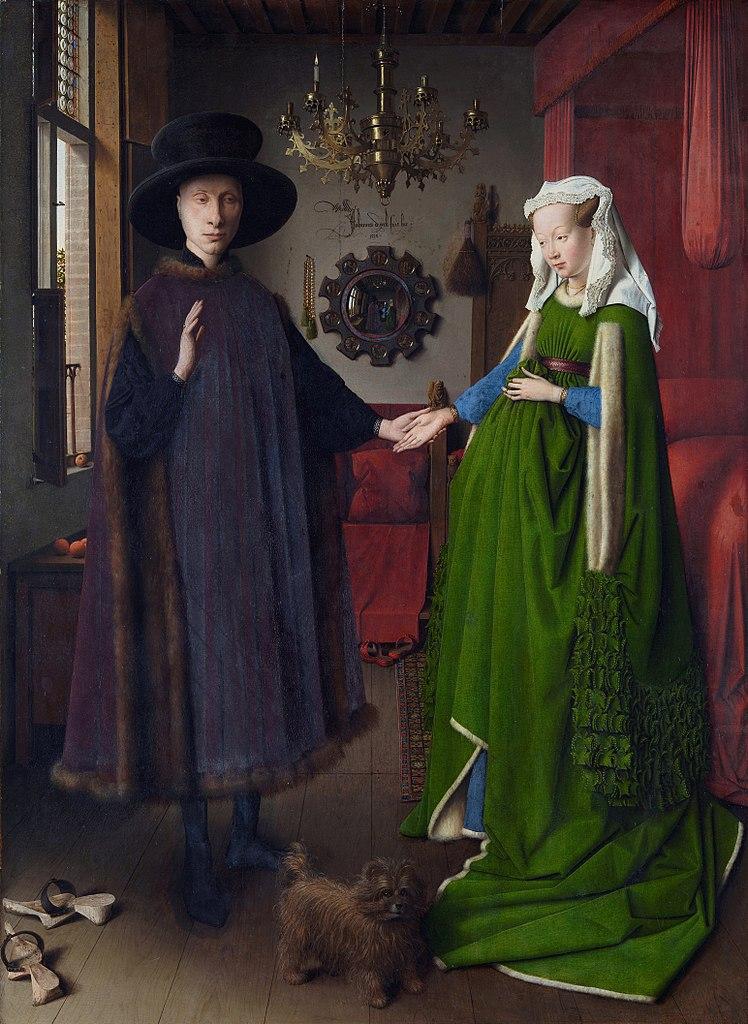
"The Arnolfini Couple" by Jan van Eyck: revealing the secrets of the painting
Contents:
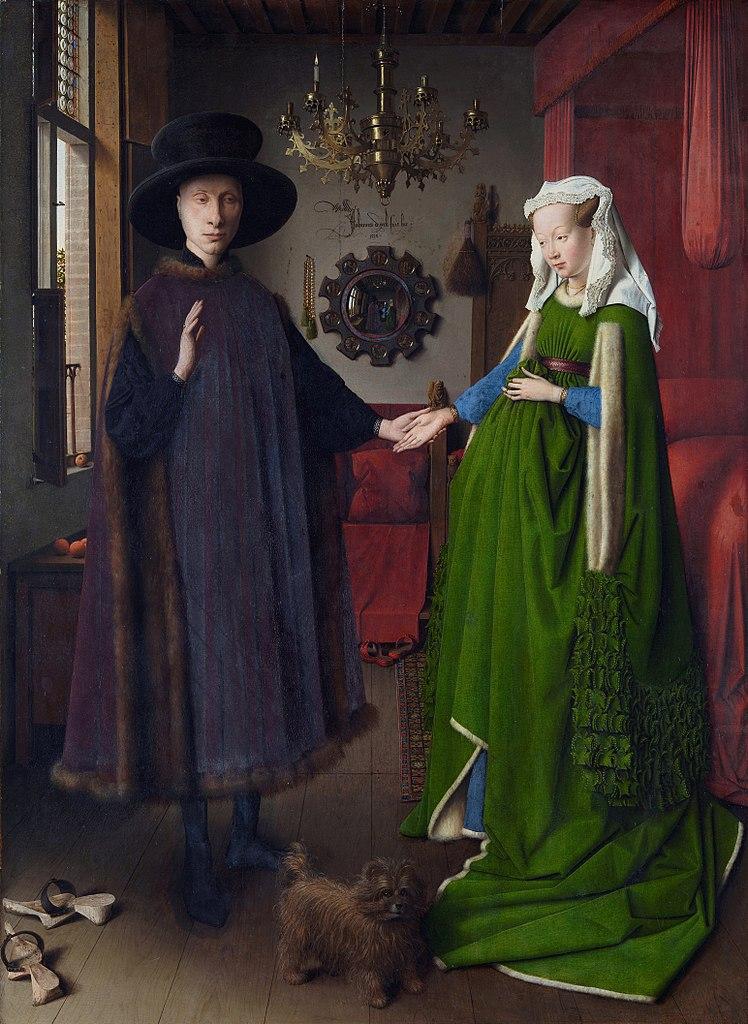
According to the official version, the painting by Jan van Eyck (1390-1441) depicts the Italian merchant Giovanni Arnolfini, who lived in Bruges. The situation is captured in his house, in the bedroom. He is holding his fiancee by the hand. This is their wedding day.
However, I think that this is not Arnolfini at all. And it's hardly a wedding scene. But more on that later.
And first I suggest looking at the details of the picture. It is in them that the secret lies, why the Arnolfini Couple is the most unique phenomenon of its time. And why this picture so shakes the imagination of all art historians of the world.
It's all about the Arnolfini hat
Have you ever looked at The Arnolfini Couple up close?
This painting is small. It's a little over half a meter wide! And in length and up to a meter does not hold out. But the details on it are depicted with phenomenal accuracy.
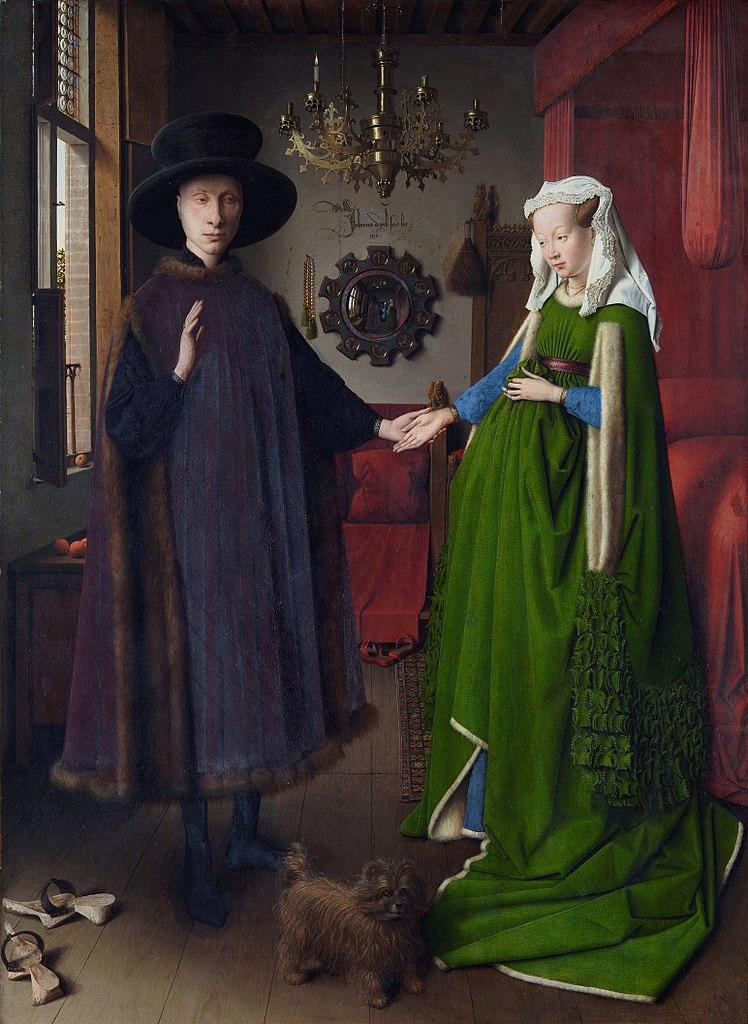
It would seem that everyone knows this. Well, the Dutch craftsmen loved the details. Here is a chandelier in all its glory, and a mirror, and slippers.
But one day I took a closer look at the man's hat. And I saw on it ... clearly distinguishable rows of threads. So it's not solid black. Jan van Eyck captured the fine texture of the smooth fabric!
It seemed to me strange and not fitting into the ideas about the work of the artist.
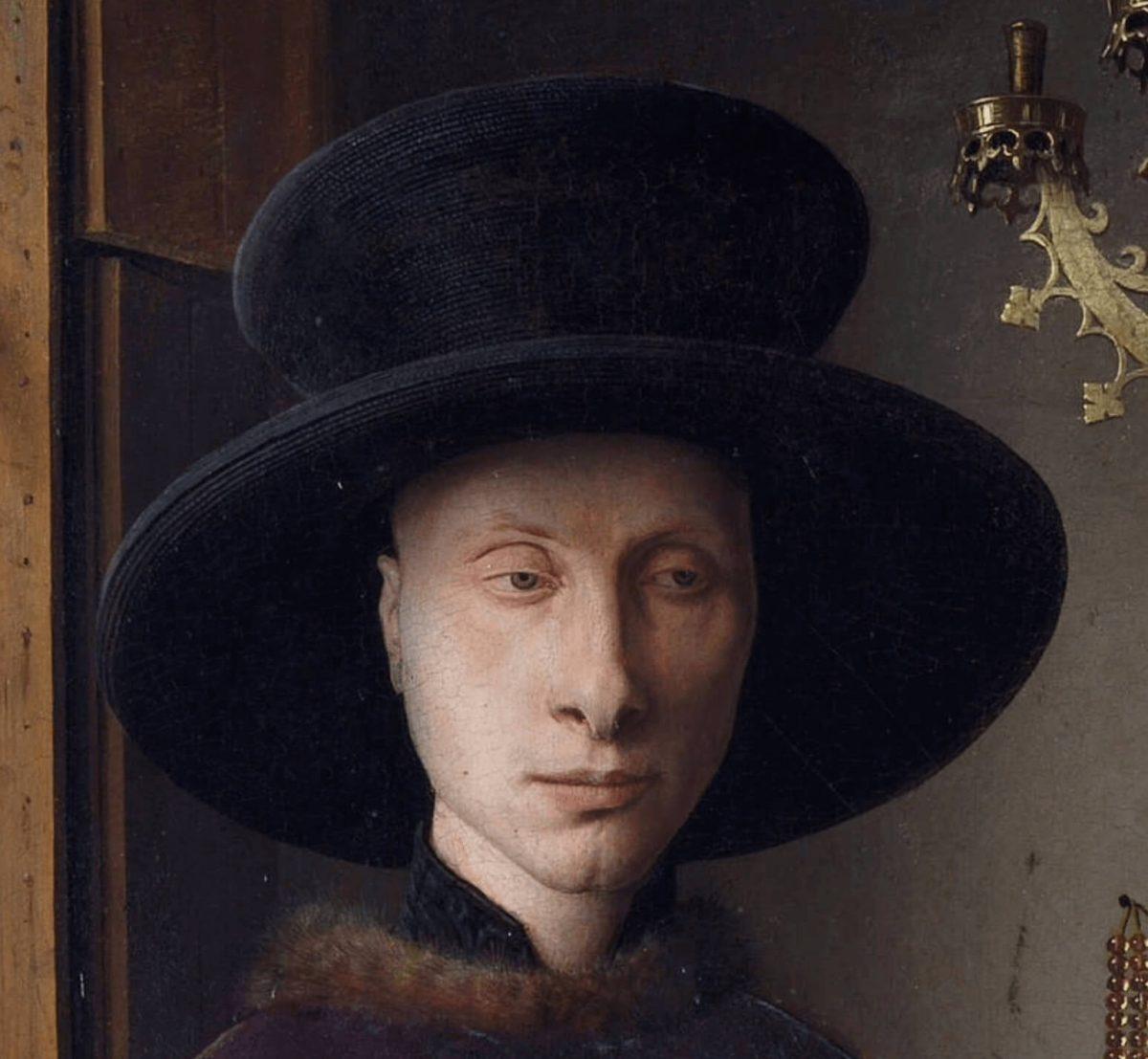
Think for yourself. Here is Jan van Eyck sitting at the easel. In front of him are the newly-appeared spouses (although I am sure that they got married a few years before the creation of this portrait).
They pose - he works. But how, at a distance of a couple of meters, did he consider the texture of the fabric in order to convey it?
To do this, the hat must be kept close to the eyes! And anyway, what's the point of transferring everything so carefully to the canvas?
I see only one explanation for this. The scene described above never happened. At least it's not a real room. And the people depicted in the picture never lived in it.
Secrets of the work of van Eyck and other Netherlanders
In the 1430s, a miracle happened in Netherlandish painting. Even 20-30 years before that, the image was completely different. It is obvious to us that artists like Bruderlam painted from their imagination.
But suddenly, almost overnight, an incredible naturalism appeared in the paintings. As if we have a photograph, not a drawing!
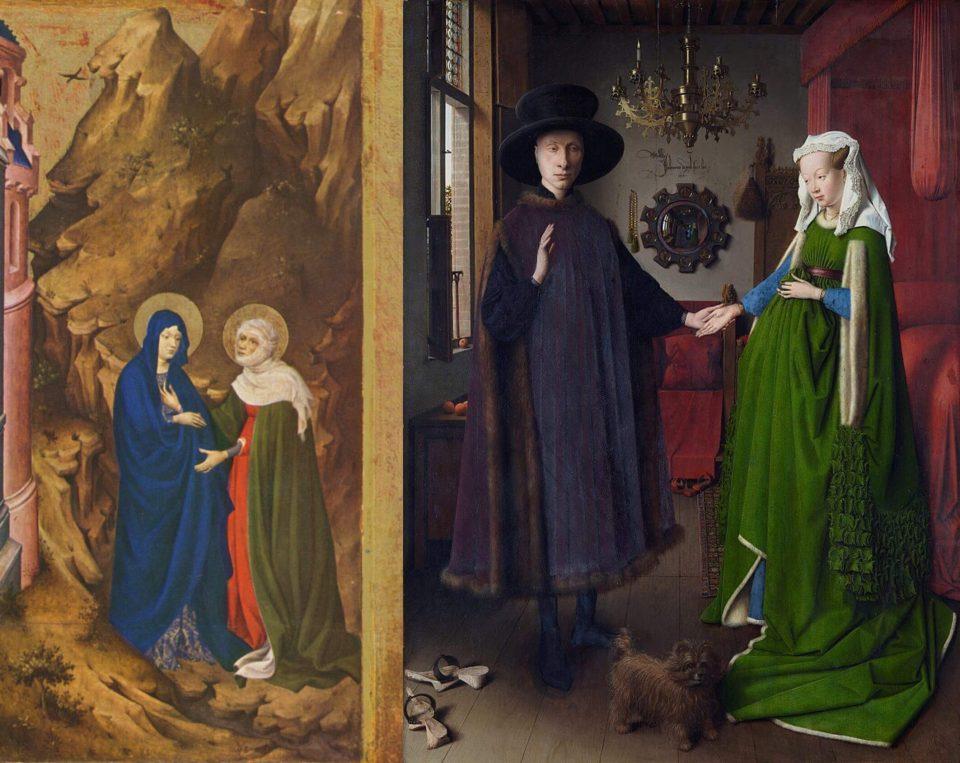
I agree with the version of the artist David Hockney (1937) that this was hardly due to the sharp increase in the skill of artists in a single country, in the Netherlands.
The fact is that 150 years before that, ... lenses were invented! And the artists took them into service.
It turned out that with the help of a mirror and a lens, you can create very naturalistic images (I talk more about the technical side of this method in the article “Jan Vermeer. What is the uniqueness of the artist.
This is the secret of the Arnolfini hat!
When an object is projected onto a mirror using a lens, its image appears right before the eyes of the artists with all the nuances.
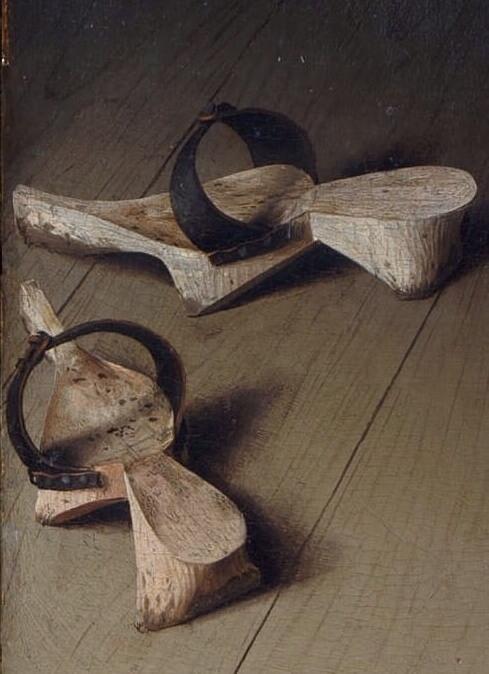
However, I in no way detract from the skill of van Eyck!
Working with the use of such devices requires incredible patience and skill. Not to mention the fact that the artist carefully thinks over the composition of the picture.
Lenses at that time were made small. And technically, the artist could not take and transfer everything to the canvas at once, with the help of one lens.
I had to overlay the image in pieces. Separately face, palms, half of a chandelier or slippers.
This collage method is especially well seen in another work by van Eyck.
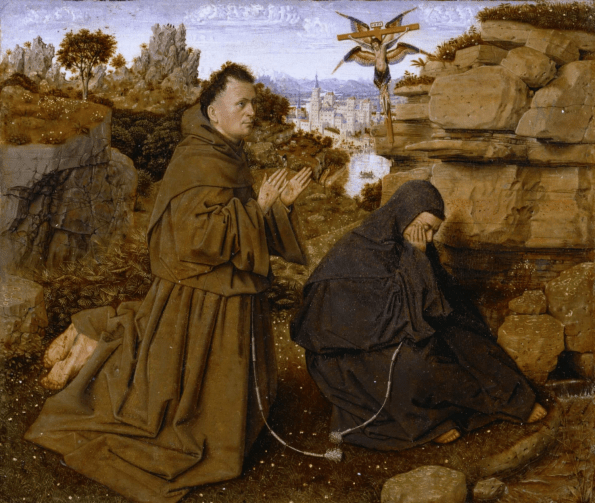
See, there's something wrong with the saint's legs. They seem to grow out of the wrong place. The image of the feet was applied separately from everything else. And the master inadvertently displaced them.
Well, at that time they didn't study anatomy yet. For the same reason, the hands were often depicted as small compared to the head.
So I see it this way. First, van Eyck built something like a room in the workshop. Then I drew the figures separately. And he “attached” to them the heads and hands of the customers of the painting. Then I added the rest of the details: slippers, oranges, knobs on the bed and so on.
The result is a collage that creates the illusion of a real space with its inhabitants.

Please note that the room seems to belong to very wealthy people. But…how small she is! And most importantly, it does not have a fireplace. This is easy to explain just by the fact that this is not a living space! Only decoration.
And that's what else indicates that this is a very skillful, magnificent, but still a collage.
We feel inwardly that for the master there was no difference what he depicts: slippers, a chandelier or a human hand. Everything is equally accurate and painstaking.
The nose with unusual nostrils of a man is drawn out as carefully as the dirt on his shoes. Everything is equally important for the artist. Yes, because it was created in one way!
Who is hiding under the name Arnolfini
According to the official version, this painting depicts the marriage of Giovanni Arnolfini. At that time, it was possible to get married right at home, in front of witnesses.

But it is known that Giovanni Arnolfini married much later, 10 years after the creation of this picture.
Then who is it?
Let's start with the fact that before us is not a marriage ceremony at all! These people are already married.
During the wedding, the couple held their right hands and exchanged rings. Here the man gives his left hand. And he doesn't have a wedding ring. Married men were not required to wear them all the time.
The woman put on the ring, but on her left hand, which was permissible. In addition, she has the hairstyle of a married lady.
You may also get the impression that the woman is pregnant. In fact, she simply holds the folds of her dress to her stomach.
This is a gesture of a noble lady. It has been used by aristocrats for centuries. We can even see it in an English lady of the XNUMXth century:
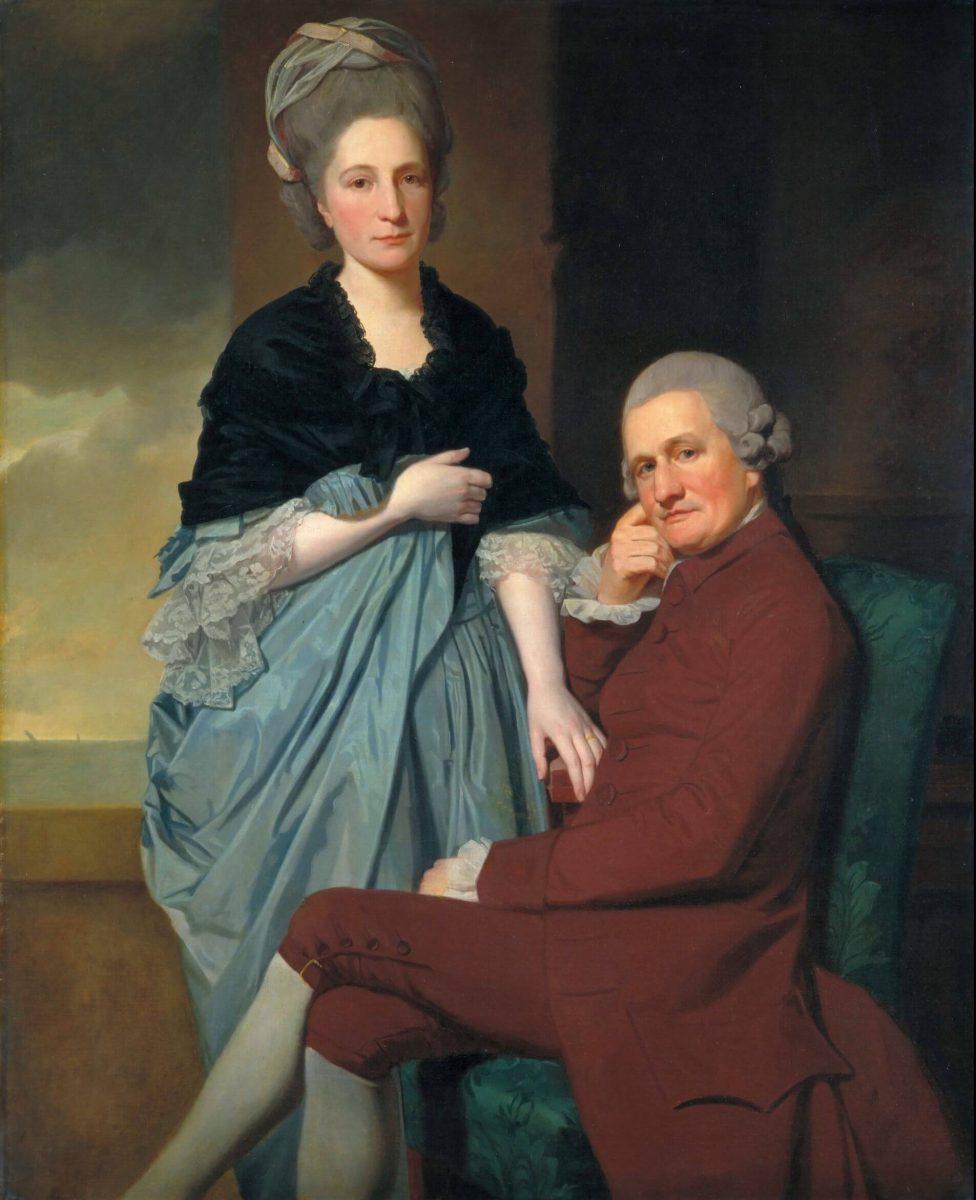
We can only guess who these people are. It is possible that this is the artist himself with his wife Margaret. Painfully, the girl looks like her portrait at a more mature age.
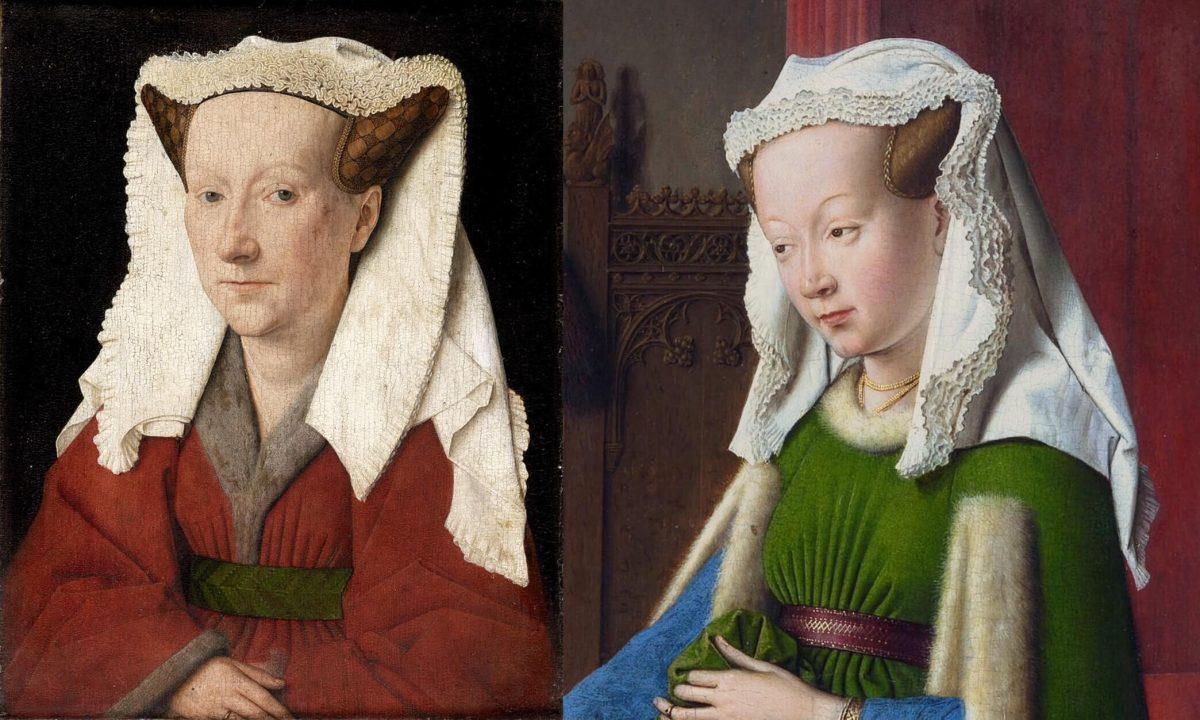
In any case, the portrait is unique. This is the only full-length portrait of secular people that has survived from those times. Even if it's a collage. And the artist painted the heads separately from the hands and details of the room.
Plus, it's actually a photograph. Only unique, one of a kind. Since it was created even before the invention of photoreagents, which made it possible to create two-dimensional copies of three-dimensional reality without manually applying paint.
***
Comments other readers see below. They are often a good addition to an article. You can also share your opinion about the painting and the artist, as well as ask the author a question.
Leave a Reply